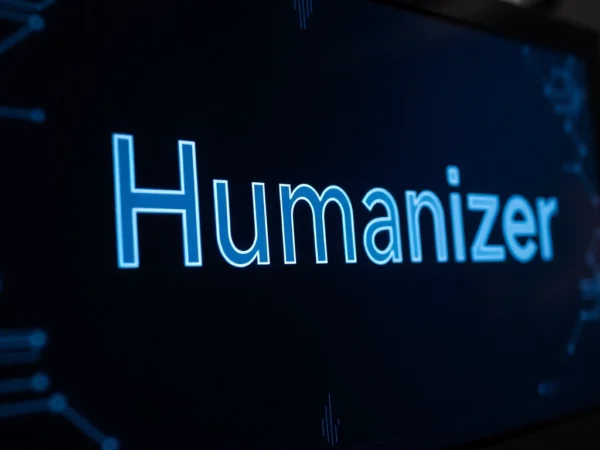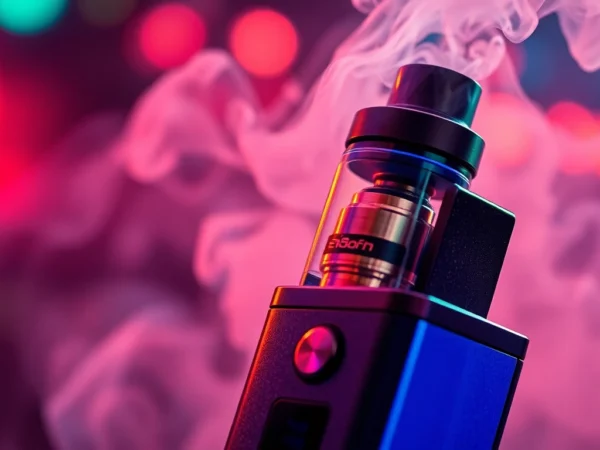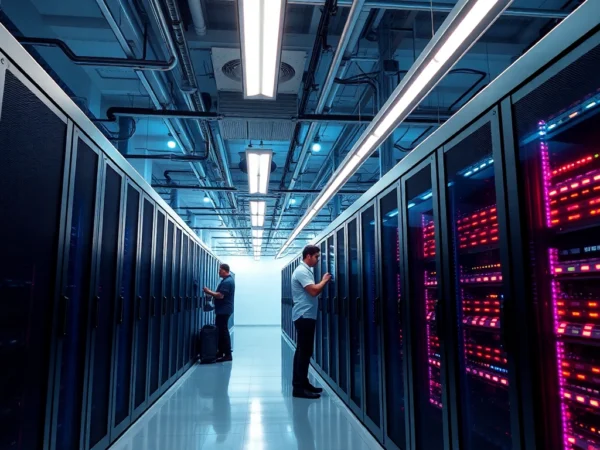Mastering Bitcoin Mining: Essential Strategies to Maximize Your Crypto Profits
Introduction to Bitcoin Mining and Its Growing Significance
In recent years, the landscape of financial technology has undergone a revolutionary transformation, with cryptocurrencies forging a new path in global finance. Among these, Bitcoin stands out as the most recognized and widely adopted digital asset, encapsulating the potential for decentralized, borderless monetary transactions. Central to Bitcoin’s operation is the process of mining— a method that not only secures the network but also creates new coins, incentivizing miners worldwide to participate in this digital economic ecosystem.
As the demand for Bitcoin escalates, so does the importance of effective and efficient bitcoin miner hardware and strategies. From individual enthusiasts to massive mining farms, understanding the nuances of Bitcoin mining is crucial to maximizing profitability and ensuring sustainability in a competitive arena. This comprehensive guide explores the core components of Bitcoin mining, the evolving technology landscape, strategic operational setups, and future outlooks—empowering readers to navigate this lucrative yet complex industry.
What Is a Bitcoin Miner and How Does It Work?
Defining a Bitcoin Miner
At its essence, a Bitcoin miner is a hardware device or a software process that performs the computational work necessary to validate transactions and add new blocks to the blockchain. Miners solve complex mathematical puzzles—cryptographic hash functions—that secure transaction data across the network. Successfully solving these puzzles and adding a new block yields a block reward, primarily composed of newly minted Bitcoin, and transaction fees. This process supports the decentralized consensus mechanism intrinsic to Bitcoin’s design.
The Mining Process in Detail
When a transaction occurs, it is broadcasted across the Bitcoin network. Miners then bundle these transactions into a block candidate. They iterate through countless nonce values—randomized numbers—applying a cryptographic hash function to find a hash output lower than the network’s current difficulty target. This task requires immense computational power and energy consumption, making efficiency critical. Once a miner finds a valid hash, the new block is propagated to the network, verified, and appended to the blockchain. The miner receives the block reward, which currently stands at 6.25 BTC per block as of 2024, along with collected transaction fees.
The process is akin to solving a lottery—highly competitive, with the probability of success proportional to the miner’s computational power. The more hashing power (hashrate) a miner or mining pool possesses, the higher their chances of earning rewards regularly.
History and Evolution of Cryptocurrency Mining
Early Days of Bitcoin Mining
Bitcoin mining commenced in 2009 with the advent of the Satoshi Nakamoto white paper. Initially, mining was accessible using ordinary CPUs on personal computers. During this nascent phase, hobbyists and early adopters could mine Bitcoin effectively without significant investment, as the network’s difficulty was low.
The Shift to GPU and FPGA Mining
As Bitcoin’s popularity surged, miners began deploying Graphics Processing Units (GPUs)—originally designed for gaming—to leverage their parallel processing capabilities. GPUs significantly outperformed CPUs, allowing higher hashrates and competitiveness. Subsequently, Field Programmable Gate Arrays (FPGAs) emerged, offering better energy efficiency and customization, further elevating the mining ecosystem.
Introduction of ASIC Miners
The game changed dramatically with the advent of Application-Specific Integrated Circuits (ASICs)—chips designed specifically for Bitcoin mining. ASICs deliver unparalleled performance and power efficiency, enabling large-scale operations to dominate the mining landscape. Today, most professional miners rely on ASIC technology due to its economic advantages. This evolution illustrates the continuous drive towards more powerful, efficient, and specialized mining hardware.
Impact of Technological Advancements and Market Dynamics
The evolution from CPU-based mining to ASICs demonstrates a clear trend toward specialization and hardware optimization. Market dynamics, such as rising Bitcoin prices, energy costs, and hardware innovation cycles, influence mining profitability and operational strategies. Additionally, fluctuations in network difficulty—adjusted approximately every two weeks—require miners to adapt quickly to stay competitive.
Current Trends in Bitcoin Mining Technologies
Innovations in Mining Hardware
Recent innovations focus on enhancing efficiency, reducing energy consumption, and increasing hashing power. New generations of ASIC miners—such as Bitmain’s AntMiner S19 series and MicroBT’s WhatsMiner M30+—offer improved hash rates with lower power per terahash ratios. These advancements allow miners to maximize revenue while minimizing operational costs.
Sustainable and Green Mining Solutions
As environmental concerns escalate, sustainable mining solutions have gained prominence. Renewable energy integration—solar, wind, hydroelectric—reduces carbon footprint and operational costs. Some mining operators are relocating to regions with abundant green energy, exemplified by companies like CleanSpark, which aims for high efficiency with sustainability commitments. Additionally, innovations like immersion cooling and energy recovery systems improve hardware lifespan and energy efficiency.
Software and Automation Trends
Modern mining harnesses advanced software for hardware monitoring, remote management, and predictive maintenance. Profitability calculators and real-time analytics facilitate dynamic decision-making. Automated firmware updates and overclocking optimize performance, while multi-platform mining management software enhances ease of operation across diverse hardware setups.
Emerging Market Dynamics
Cryptocurrency markets are volatile, influencing miners’ decisions. The rise of mining pools—collective efforts to aggregate hashing power—stabilizes income and shares risk. Cloud mining services allow individuals to participate without hardware investments, broadening access but raising concerns over transparency and long-term profitability.
Choosing the Right Hardware for Effective Bitcoin Mining
ASIC Miners vs. GPU Miners: Which is Better?
The choice between ASIC and GPU miners depends on several factors. ASICs are specifically designed for Bitcoin and offer the highest efficiency and hashing speeds, making them the dominant choice for large-scale, dedicated mining operations. However, they lack versatility and are expensive upfront. GPUs, on the other hand, are more flexible, supporting multiple cryptocurrencies and algorithms, making them suitable for hobbyists or those seeking diversification. For Bitcoin mining, ASICs generally provide better ROI due to their superior performance and energy efficiency.
Factors to Consider When Buying Bitcoin Miner Equipment
Key considerations include:
- Hashrate: The computing power; higher rates typically mean higher earning potential.
- Power Consumption: Measured in watts; lower consumption reduces operational costs.
- Energy Efficiency: Hashrate per watt ratio; crucial in maximizing profitability, especially in energy-cost sensitive regions.
- Cost and ROI: Hardware price versus expected earnings; longer-term profitability should be evaluated.
- Hardware Reliability and Support: Durability, manufacturer reputation, technical support, and availability of spare parts.
- Noise and Heat Output: Important for noise-sensitive environments and cooling requirements.
Top Bitcoin Miners in the Market Today
Leading models include:
- Bitmain AntMiner S21+ — Known for high efficiency and reliability, suitable for professional farms.
- AntMiner S21 XP+ Hyd. — Advanced liquid-cooled ASIC for higher power density.
- MicroBT WhatsMiner M30+ — Offers impressive hashrate with efficient power use.
- WhatsMiner M50 series — Future-oriented models focusing on sustainability and scalability.
Optimizing Your Mining Operations for Higher Efficiency
Setting Up a Secure Mining Environment
Security begins at the hardware and network levels. Use hardware wallets to secure your earnings, ensure your mining rig is isolated from insecure public networks, and implement robust firewall and anti-malware solutions. Regular software updates and audits help prevent vulnerabilities. Proper physical security—locked enclosures, surveillance—also safeguards hardware from theft or tampering.
Power Management and Cost Optimization
Electricity is the largest operational expense. To optimize it:
- Choose locations with low-cost, reliable power—many successful miners operate in regions with abundant renewable energy.
- Implement energy-efficient hardware models and cooling solutions such as immersion or evaporative cooling.
- Utilize energy management systems to turn off or lower power during peak rates.
- Negotiate energy contracts or participate in demand response programs to reduce costs.
Maintaining a balance between hardware performance and energy consumption is vital for profitability.
Software and Firmware Best Practices
Use the latest firmware provided by hardware manufacturers for optimal stability and security. Leverage mining management software to monitor device performance, temperature, and hashrate. Automate firmware updates where possible to benefit from security patches and performance improvements. Regular calibration and tuning of hardware settings can yield gains in efficiency and lifespan.
Maximizing Profitability and Managing Risks in Bitcoin Mining
Calculating Mining Profitability and ROI
Determining profitability involves analyzing several parameters:
- Hardware hash rate and power consumption.
- Electricity costs per kilowatt-hour.
- Current Bitcoin price and network difficulty.
- Operational expenses, including cooling, maintenance, and internet costs.
Various calculators and tools, such as NiceHash’s profitability calculator, can provide real-time estimates. Conducting detailed ROI calculations assists in making informed investment decisions and scaling operations prudently.
Handling Market Volatility and Hardware Fluctuations
Cryptocurrency markets are inherently volatile, impacting revenue streams. Diversification—mining multiple coins or algorithms—can reduce risk. Additionally, maintaining flexibility in hardware deployment allows quick adaptation to market shifts. Hardware depreciation and obsolescence should be accounted for in financial planning, with hardware upgrades scheduled based on technological advancements and economic factors.
Regulatory Considerations and Compliance
Regulations vary by jurisdiction, covering energy consumption, taxes, and financial disclosures. Compliance ensures sustainable long-term operations. Staying informed through legal counsel and industry groups helps navigate evolving policies. Proper licensing, environmental compliance, and transparency with stakeholders safeguard against legal risks.
Future Outlook and Innovations in Bitcoin Mining
Emerging Technologies and Sustainable Solutions
Innovations such as next-generation ASICs with higher efficiency, AI-driven optimization, and renewable energy integrations are shaping the future. Companies are investing in green energy projects, like solar mining farms, to meet sustainability goals while enhancing profitability. Additionally, innovations in cooling technologies—such as immersion cooling—reduce energy usage and hardware wear, promoting eco-friendly mining.
Scaling Your Mining Business Strategically
Scalability involves infrastructure planning, operational automation, and financial stacking. Cloud mining and hosting services can offer flexible expansion options. Developing partnerships with energy providers and manufacturers helps secure supply chains and hardware upgrades. Strategic location selection, based on electricity prices and regulatory environment, is crucial to growth.
Preparing for the Next Generation of Bitcoin Miners
The industry anticipates continued hardware innovation, with potential integration of quantum-resistant algorithms and enhanced energy efficiency. Keeping abreast of technological breakthroughs, investing in modular and upgradeable systems, and fostering collaborations with research institutions will position miners favorably for future advancements.









